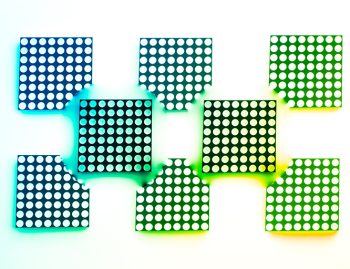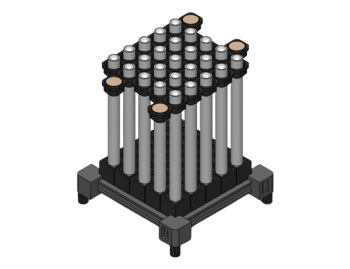
There are two main components in a light pipe design: the LED light source and the light pipe. The design engineer must pay close attention to the pairing of the light pipe and the LED to minimize light loss and ensure best performance.
The LED must be effectively matched to the entrance of the light pipe to allow for proper light capture for maximum light transfer.
The importance of reducing light bleed
Light bleed occurs when light from the LED can be visible around the LED and light pipe area. Light bleed causes false-readings, muted and blended colors, crosstalk between adjacent light pipes, and unwanted glow in the enclosure.
When a rigid light pipe is located over the LED, it allows for a certain amount of light bleed at the base of the light pipe. A flexible light pipe is designed to provide less light bleed with a coated optical fiber and a light resistant black adapter. Rigid and flexible light pipes can also be PCB mounted. To eliminate light bleed, rigid and flexible light pipes are now available with a fully enclosed adapter as well.
Maximum design flexibility occurs when the designer can choose between designing with individual components (LED and light pipe) or using a complete system solution that includes both elements. Bivar offers both options.
LED Choices for light pipe pairing
Two types of LEDs are commonly available. Surface mount LEDs, often called SMD (surface mount device) LEDs, are mounted on the surface of the PCB and are smaller and brighter than through hole LEDs. Both types are offered in a wide range of sizes, colors, luminosities, and powers. Through-hole LEDs are mounted by inserting leads through the PCB and soldering to provide a stronger connection between layers; the soldering also increases protection against mechanical stress.
LED Specifications
Some key LED specifications are:
- Size: Through-hole LEDs are sized in millimeters (1.8mm, 3mm, 5mm) and SMD LEDs are based on industry standard package sizes. For example, an 0402 package (SM0402) has dimensions (length × width) of approximately 0.4mm X 0.2mm.
- Color: Both types of LEDs are available in a wide range of single colors. SMD LEDs have additional options, including white or single, bi-color and tri-color, in an array of color configurations.
- Brightness: LED light output (brightness intensity) is commonly measured in millicandelas (mcd) or lumens (lm). The higher the mcd or lm rating, the brighter the light intensity.
LED choices from Bivar
Bivar offers industry-standard SMD LEDs for individual use or with Bivar rigid or flexible light pipes. A wide variety of colors and luminosities are available, depending on package. LEDs in reinforced packages are suitable for use in harsh environment conditions. The table below shows some suitable Bivar SMD LEDs sorted by size. Each model has numerous colors available.
| Model # | Package | Light Pipe | Features |
| SM0402 | 0402 | Rigid/Flexible | Ultra-miniature package, 120° viewing angle |
| SM0603 | 0603 | Rigid/Flexible | 120° viewing angle |
| SM0605 | 0605 | Rigid/Flexible | Bi-color LED |
| SM0805 | 0805 | Rigid/Flexible | 120° viewing angle |
| SM0807 | 0807 | Rigid/Flexible | 120° viewing angle |
| SM1204 | 1204 | Rigid/Flexible | 120° viewing angle |
| SM1206 | 1206 | Rigid/Flexible | Narrow 30° inner lens viewing angle |
| SM1210 | 1210 | Rigid/Flexible | Two chips in 1 package, 120° viewing angle |
Through-hole LEDs are also available.
Standalone light pipes
It is important to pair the LED with an appropriate adapter to best suited for your application. Decision factors include space constraints, power requirements, desired brightness, and PCB mounting requirements.
Bivar offers adapters that are designed for use with already installed LEDs, plus integrated solutions with a built-in SMD or through-hole LED. Figure 1 shows the SMFLP adapter designed for an existing SMD LED that must be paired with an optical fiber/lens cap to form a complete flexible light pipe system.

Figure 1: The SMFLP adapter pairs a flexible light pipe with a pre-existing SMD LED
ZeroLightBleed™ technology eliminates light bleed
In addition to the adapters discussed above, Bivar’s innovative ZeroLightBleed™ (ZLB) technology eliminates light bleed in both rigid and flexible light pipes. The ZLB adapter channels light directly to the lens.
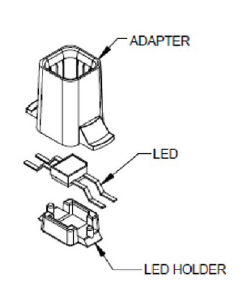
Figure 2: ZeroLightBleed™ adapter with built-in surface mount LED
Figure 2 shows the component parts. The adapter assembly is soldered directly to the PCB, thus strengthening the attachment to the PCB. The new light pipe system is optimal for high vibration applications. The new system makes sourcing simple by including the ZeroLightBleed™ adapter, LED, and light pipe in one, delivering convenience and resource savings for both procurement and assembly. The adapter offers built-in single, bi-color, and tri-color LEDs in a choice of fourteen colors.
ZeroLightBleed™ solutions for flexible light pipes
The SZ family combines the ZLB adapter with a Bivar SMD LED and a flexible light pipe. Three mounting options are available: Surface Mount, Firm Retention and Post Retention. The optical fiber offers a choice of 1mm or 2mm, a choice of six colors, and lengths from 1 in to 100 ft.

Figure 3 (a) SZ ZLB system (b) mounting options
ZeroLightBleed™ solutions for rigid light pipes
Bivar offers a ZLB solution for rigid light pipes in the LPR and LPV product families. These products are available in right angle (LPR) and vertical (LPV) configurations. The all-in-one adapter system is built with optimum light pipe and LED compatibility, making light pipe design easy and delivering convenience and resource savings for procurement and assembly. Figure 4 shows an LPR example.
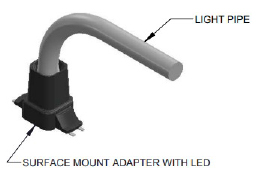
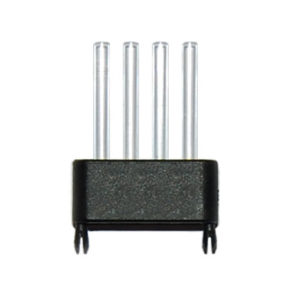
Figure 4: LPR Zero Light Bleed Adapter with a right-angle light pipe
The LPR and LPV combine the most compatible LED and rigid light pipe pairings and provide maximum light transmission while eliminating light cross talk between light pipes.
Light pipe systems with integrated LEDs
Integrated options are also available. The ORFLP system (Figure 5), for example, is a board-mounted adapter system with a built-in Bivar 4-pin Through-Hole Superflux LED and flexible light pipe for vertical applications.

Figure 5 (a) ORFLP system with through-hole LED (b) placement of LED in adapter
The FLPR2-XX adapter (Figure 6) offers a built-in through-hole LED with a right-angle mounting.

Figure 6 (a) FLPR2-XX system with through-hole LED (b) placement of LED in adapter
The designer can choose from hundreds of combinations of LED color and light pipe length.
Conclusion: something for everyone!
When pairing a light pipe and an LED, it’s important to maximize light transfer and minimize light bleed.
In cases where there is an existing through-hole or SMD LED, an appropriate light pipe and adapter are required, and Bivar offers options for both rigid and flexible light pipe installations. A new design can achieve the best performance with Bivar’s ZeroLightBleed™ adapter that combines a Bivar SMD LED with either a flexible or rigid light pipe.
Either way, there’s something for all application needs. Contact us to get started!
FAQ
Bivar LEDs and light pipes can be used with non-Bivar LED and light pipes when design recommendations are met. The type of LED is critical, as there are light pipes better suited to SMT LEDs and some are designed for discrete through-hole LEDs. The size relationship between LED and light pipe entrance face needs to be compatible: Too small of an LED and intensity will be low, while too small of a light pipe entrance face and much of the LED’s light doesn’t launch into the light pipe and is lost. This is also typical of the LEDs viewing angle as it should be compatible with the size of the light pipe size to capture most of the light. LED size needs to be considered for flexible light pipes that have adapters as the base and these adapters have pre-defined volumes for the LEDs.
Matching the light pipe size to the LED size and viewing angle is the universal benefit to efficiency and avoiding the waste of light. The LED datasheet will show the viewing angle of the LED as well and the energy required by that LED.
Each type of light pipe will have specific installation requirements and it is recommended to refer to the instructions available to download from Bivar.com. Generally speaking, light pipes will require a specific type of hole in the display or indicator panel. These will be based on light pipe size, lens if applicable, IP rating, type of mounting the light pipe uses. On the other end, there are specific requirements for the LED and the mounting of the light pipe. These are available with every light pipe product on our site.
You can also check out our quick videos on how to install different types of light pipes.
Every project is unique with different needs but Bivar is here to help with any projects, large or small, simple or complex! Talk to us today!
Rigid light pipes have a well defined form and are recommended on instances where the length between the light source and the target display area, are not far from each other, typically between 0.100” and 2”.
Flexible light pipes are designed to overcome certain physical and distance challenges that rigid light pipes may have if not considered at the initial stages of a project. Costs may vary but an FLP typically requires the actual FLP plus a lens cap to properly fix and propagate the light output, therefore with slightly higher costs.
ZeroLightBleed™ has a very specific function that provides a valuable tool to the designers where light cross-talk may potentially provide erroneous information to the users. Projects costs may vary depending on the intended application as well as target specifications of the final product, but if light bleed is not desired, a ZeroLightBleed™ solution is your best bet.
Leave a Reply Cancel reply
You must be logged in to post a comment.




